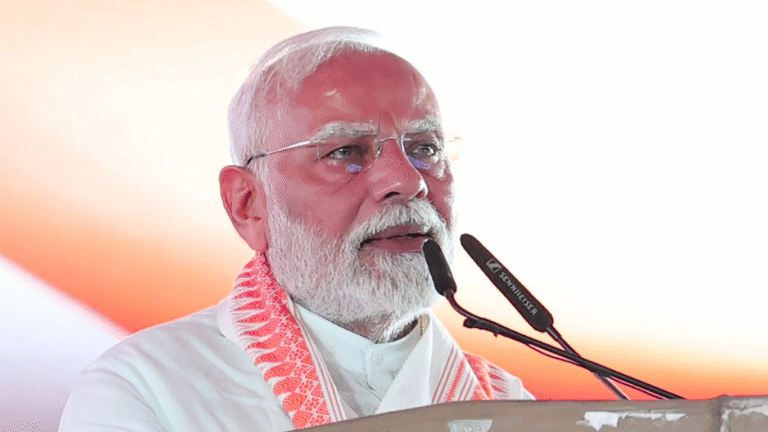
Azamgarh – Electricity workers in Azamgarh, Uttar Pradesh, are gearing up for a major protest on July 22 to oppose the privatization of the state’s power sector. The announcement came during a heated meeting today at the Lalganj power distribution office, organized by the Vidyut Karmachari Sanyukt Sangharsh Samiti, a coalition of electricity workers’ unions. The workers are rallying against what they call a “backdoor” move by the Uttar Pradesh government to hand over electricity distribution to private companies, which they fear will lead to job losses and higher power bills for consumers.
The protest is part of a broader movement led by the All India Power Engineers Federation (AIPEF) and the National Coordination Committee of Electricity Employees and Engineers (NCCOEEE). Workers across Uttar Pradesh, including in cities like Lucknow, Varanasi, and Gorakhpur, are expected to join the demonstrations. In Azamgarh, hundreds of employees, from junior engineers to linemen, plan to gather outside the Chief Engineer’s office, demanding that the government halt its privatization plans and address their long-standing concerns.
Why Are Workers Protesting?
The heart of the issue lies in the proposed privatization of Uttar Pradesh’s power distribution companies, such as Purvanchal Vidyut Vitran Nigam Limited. Workers argue that private companies prioritize profits over public welfare, which could mean higher electricity rates and poorer service for rural areas like Azamgarh. “We’ve seen this before—private firms take over, cut jobs, and jack up bills,” said Anil Kumar, a junior engineer and union leader. “Farmers and poor families will suffer the most.”
The workers also point to recent management decisions that they say hurt both employees and consumers. These include faulty facial recognition-based attendance systems that have led to wage deductions and the growing role of private firms in meter reading, which workers blame for widespread billing errors. A 15-point list of demands, first raised in a 2022 sit-in in Azamgarh, remains unresolved, fueling frustration.
Today’s meeting in Lalganj saw fiery speeches, with workers vowing to escalate their protests if the government doesn’t act. They’ve warned of a potential statewide strike on July 29 if privatization moves forward, a threat echoed by unions in Maharashtra and other states.
A Growing Movement
The Azamgarh protest is part of a larger wave of resistance against power sector privatization across India. On July 20, AIPEF held a national meeting in Lucknow, where leaders warned that electricity workers and engineers nationwide would take to the streets if the government pushes ahead with its plans. The Electricity (Amendment) Bill, 2022, which allows private companies to use public sector distribution networks, has been a major flashpoint. Although the bill was sent to a parliamentary committee after protests in 2022, workers fear the government may reintroduce it without addressing their concerns.
In Azamgarh, local farmers and residents have shown support for the workers, worried about rising costs. “Electricity is already expensive, and power cuts are common here,” said Ram Prasad, a farmer from Mubarakpur. “If private companies take over, it’ll only get worse.” The workers’ unions have also called for the restoration of the old pension scheme and better working conditions, issues that resonate with other public sector employees.
Challenges and Criticism
The government, however, defends its push for privatization, arguing it will improve efficiency and reduce losses in the power sector. Uttar Pradesh’s Energy Minister, Arvind Kumar Sharma, has claimed that private partnerships could modernize the aging infrastructure. But critics, including opposition parties like the Samajwadi Party, argue that privatization often leads to higher tariffs and neglect of rural areas. In 2018, similar protests in Ajmer saw Congress workers block roads, alleging private companies were “looting” consumers with inflated bills.
Some residents in Azamgarh worry that protests could disrupt power supply, especially during the hot summer months. “We support the workers, but we can’t afford outages,” said Shalini Devi, a shopkeeper. The unions have promised to keep disruptions minimal, focusing on peaceful demonstrations.
What’s Next?
As July 22 approaches, Azamgarh’s electricity workers are preparing banners and organizing rallies. The protest will likely draw attention to the broader fight against privatization, with similar events planned across Uttar Pradesh. If their demands aren’t met, workers say they’re ready for tougher actions, including joining a nationwide strike on July 29.
The outcome of these protests could shape the future of Uttar Pradesh’s power sector and influence similar movements across India. For now, Azamgarh’s workers are standing firm, determined to protect their livelihoods and the public’s access to affordable electricity.



